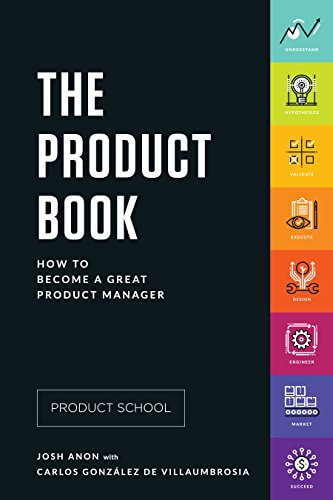Product development is a highly cross-functional, collaborative process. As a result, knowing how to best navigate people and product obstacles is crucial to shipping faster, delivering the right products for users, and working better as a product team.
We were curious what the core strategies are for tackling barriers in product dev from teamwork, product workflows, design and growth, so we reached out to those that have a pulse on the most relevant tactics for product teams: you! Here are the must-read books submitted by our social media followers that you should add to your product dev bookshelf. Get reading!
Be a better teammate

1. The Making of a Manager
By Julie Zhuo
For anyone leading, about to lead, or is being led, Julie Zhuo brings real-world examples and succinct insights about dos and don’ts as a manager. This is your field guide for staying level-headed, reasonable, and people-oriented.
Looking to optimize your team’s collaboration with the future of work? See what a visual workspace could do.

2. Tools of Titans
By Tim Ferriss
Tim Ferriss is the it-guy for perspectives on ways of working and ways of being, and then optimizing those ways. Looking for life-hacks on steroids, from people that are proving their own success? Tools of Titans gives applicable, actionable steps for your day-do-day work and life in a to-the-point manner, with real-world examples.

3 .Radical Candor
By Kim Scott
Transparency, trust, and authenticity are all sought-out qualities of today’s leaders. But how do you actually embody those virtues? Kim Scott suggests approaching leadership with radical candor: a way of being that puts clear communication, specific feedback, and kind sincerity at the forefront of good workplace teamwork. This is something to read to reflect on your own methods of communication, and glean subtle ways to shift your approach.
Improve your product workflows

4. Shape Up
By Ryan Singer
Basecamp notoriously makes their own path in how they operate and get things done. Shape Up bucks the trends of agile, scrum and waterfall, and provides an alternative product dev process they developed on their own and in isolation from these other methods. Here’s the Basecamp way for quick, quality, team-based work — documented.

5. The Lean Product Playbook
By Dan Olsen
Product-market fit: We hear the term thrown around all the time, but most of us don’t know what it really means or how to actually attain it. Dan Olsen uses the philosophy of Lean (a methodology for fast, to-the point product dev) to give step-by-step instructions on effective product development that meets the needs of customers and the market.

6. The Product Book
By Carlos González de Villaumbrosia and Josh Anon
What does a product manager actually do? From company to company, the role of a product manager has extreme variability. Product School brings a comprehensive crash-course in all things product management for those interested in breaking into the field.

7. Running Lean
By Ash Maurya
This Lean-centric book takes a more comprehensive approach to guiding toward innovation by thinking about business design. By walking through the entire lifecycle of a product, Running Lean instructs how to ask the right questions, make the right decisions and best utilize invested time and resources.
Design better stuff

8 Mismatch: How Inclusion Shapes Design
By Kat Holmes
There are so many assumptions baked into the world that’s been designed for us. With a critical perspective on today’s design approaches, Mismatch explores who products exclude in their design and how to change that. By thinking about inclusivity, Holmes reveals new opportunities to innovate and find more creative solutions as a result.

9. Nudge
By Richard Thaler
A classic at the intersection of behavioral science and economics, Nudge is a scientific approach to the smart design of things. It reminds the reader that customers are illogical, fallible people (like we all are!), and there’s a way to capitalize on that in design. This will be a deep dive into the human psyche so you can better develop products with human decision-making in mind.
For finding better growth

10. Hacking Growth
By Sean Ellis
Using the Airbnbs, Ubers, and Facebooks of the world as examples, this is a crash course in growth-hacking: a strategic balancing act of market forces, customer-centric design, and smart workplace practices for scalable products. Curious what makes these market behemoths thrive? Read this.

11. Value Proposition Design
By Alexander Osterwalder
Getting to the core of your business and customers is a lot harder than it sounds. We all want to design useful stuff, but creating the right useful stuff can be difficult. Looking to whittle your business idea down to something viable and valuable (and successful)? This will help you frame your thinking by getting to the root of who you’re serving and get a sense of your product-market fit. And, if you want to put what you learn into action, check out Osterwalder’s business model canvas template.





